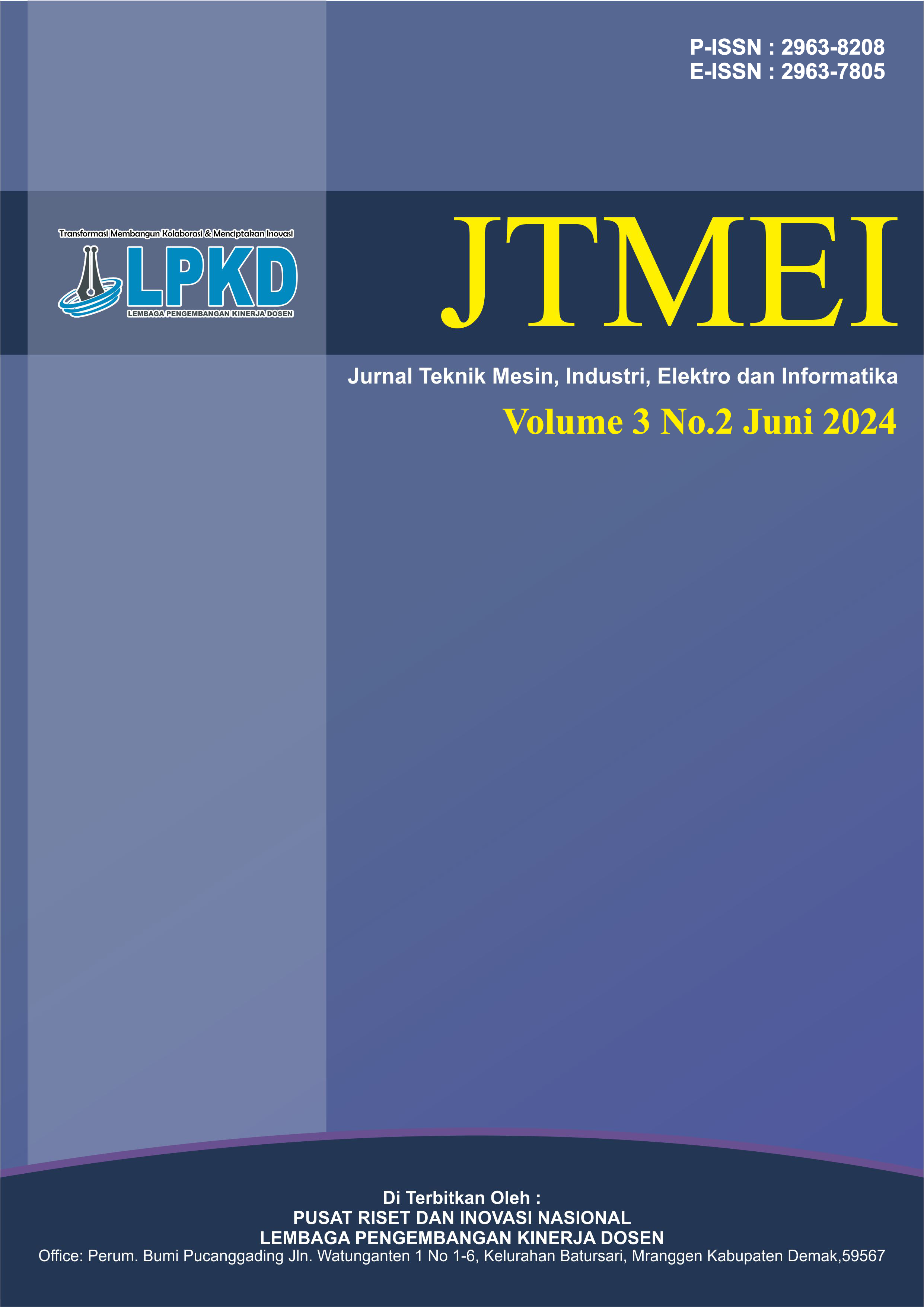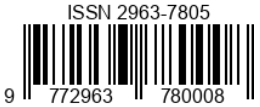Rancang Bangun Low Cost Wind Turbine Untuk Pengisian Baterai
DOI:
https://doi.org/10.55606/jtmei.v3i2.3777Keywords:
Wind turbine, Battery, Blade angleAbstract
Renewable energy is increasingly popular and in demand throughout the world as an alternative to increasingly limited fossil energy, one of which is wind turbines. Wind turbine research on ships has great potential in developing renewable energy at sea. The aim of this research is to increase the efficiency of converting wind energy into electrical energy by designing a low cost wind turbine and analyzing the design efficiency of the wind turbine blade angle, namely 90˚, 95˚, 100˚. This research uses an experimental method with observation techniques, as well as measurement and recording as data collection techniques. This research was conducted on the Bung Tomo training ship for 3 days. The research results show that making a wind turbine using PVC as a base material costs Rp. 243,000.00 and produces the largest average voltage of 73.8 Wh. The influence of variations in the angle of the wind turbine blade can be seen that at an angle of 100˚ it has the largest average power output, namely 1.23 watts per minute and the battery charging time is based on an average current of 0.28 A, namely 12.5 hours when fully charged, whereas at The 90˚ angle produces the smallest average power of
0.76 watts per minute and the battery charging time is 16.6 hours when fully charged. So the 100˚ angle is more effective in charging the battery than the 95˚ and 90˚ angles. The greater the blade angle, the greater the rotation and produce greater voltage, this is influenced by the area of the turbine exposed to wind.
Downloads
References
Andoh, P. Y., Charles, K. K. S., Godwin, K. A., & Michael, N. S. (2021). Fabrication and testing of a low-cost wind turbine blade using bamboo reinforced recycled plastic. Journal of Applied Engineering and Technological Science, 2(2), 125-138.
Arifin, M. D., Fanny, O., & Arif, P. (2014). Perancangan dan pembuatan prototype turbin Savonius dalam rangka pemanfaatan renewable energy (angin) untuk sistem penerangan pada kapal. Inovasi Teknologi Kelautan, 14-20.
Arifin, A. Z. (2022). Rancang bangun sistem kesusakan baterai untuk wind turbine. Skripsi. Fakultas Teknologi Industri, Institut Teknologi Nasional Malang.
Bentara, R. S., Berlian, A. A., & Kiryanto. (2018). Analisa teknis dan ekonomis penggunaan wind turbine untuk konversi energi pada kapal ikan yang menggunakan sistem pendingin refrigerated sea water. Jurnal Teknik Perkapalan, 6(1), 74-82.
Bockmann, E., & Sverre, S. (2011). Wind turbine propulsion of ships. Second International Symposium on Marine Propulsors.
Febrianto, R., Noer, S., & Osea, Z. (2018). Rancang bangun boost converter untuk proses discharging baterai pada penerangan jalan umum tenaga surya (Pjuts). Prosiding Seminar Nasional Teknologi Elektro Terapan, 2(1), 159-163.
Febrielviyanti, Maksi, G., & Zulkarnain. (2015). Konversi energi angin menjadi energi listrik dalam skala laboratorium. JOM FMIPA (Online), 2(1). Diakses pada tanggal 31 Mei 2023.
Fuad, A. (2015). Kajian penambahan manfaat energi kinetik kipas angin rumahan. Inosains, 10(2), 80-87.
Hadimuljono, M. B., Paulus, K., & Wartono, R. (2019). Geothermal Economic Handbook in Indonesia. Yogyakarta: ANDI.
Hidayat, M. N. (2020). Rancang bangun pembangkit listrik tenaga angin menggunakan turbin ventilator sebagai energi alternatif pada Masjid Taqwa di Desa Sei Litur Kabupaten Langkat. Skripsi Sarjana pada FT UMSU Medan.
Rahman, D. F. (2022). Hampir 87% listrik RI berasal dari bahan bakar fosil pada 2020. Databoks. Available at: https://databoks.katadata.co.id/datapublish/2022/04/12/hampir-87-listrik-ri-berasal-dari-bahan-bakar-fosil-pada-2020 (Accessed: 19 March 2023).
Riyadi, M. S. (2023). Pengaruh sudut sudu terhadap putaran turbin angin Savonius tipe-L. Jurnal Simetris, 17(1), 6-8.
Polivinil klorida. (n.d.). Wikipedia. Retrieved from https://id.m.wikipedia.org/wiki/Polivinil_klorida
Downloads
Published
How to Cite
Issue
Section
License
Copyright (c) 2024 Jurnal Teknik Mesin, Industri, Elektro dan Informatika

This work is licensed under a Creative Commons Attribution-ShareAlike 4.0 International License.








